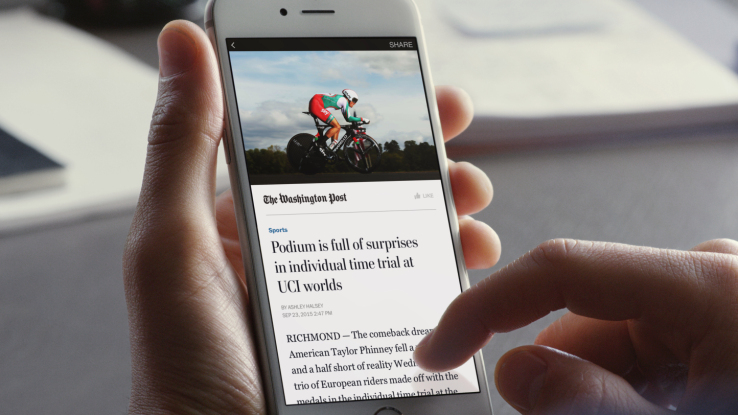

Earlier this year, Facebook announced it would allow publishers to include more ads in their “Instant Articles” — the mobile web format that makes news articles load more quickly on Facebook, but have been called out by publishers whose ad-dependent businesses suffered as a result. In March, Facebook began testing ad units at the bottom of Instant Article pages — in the related articles section. Today, that test is opening to all publishers on the network, says Facebook.
The test involves placing a native ad unit in Instant Articles that shows readers relevant ads from Facebook’s own advertisers. According to Facebook, the initial test saw an “incremental increase” in revenue for participating publishers, but it didn’t get into specific numbers.
The company now says it’s looking to get feedback from a wider set of publishers about this unit in order to iterate on the experience.
The company’s Instant Articles — Facebook’s counterpoint to other technologies like Google’s AMP or Apple’s News format — are designed to make it easier to read publishers’ content while on the mobile web. All these technologies, at their core, are about stripping down articles to just what a reader is interested in — the text and accompanying media, like photos — without all the cruft publishers have piled on over the years, like ad units, autoplaying videos, tracking scripts and more.
However, publishers haven’t liked this shift to a cleaned-up mobile web, because all that extra “stuff” layered on their websites is what helps them pay their bills. They need advertisers, paying subscribers, event attendees and the like in order to grow their businesses.
That’s led Facebook to have to make several concessions to keep their Instant Articles snappy to load, while also catering to publishers’ need to actually make money. The company has steadily been tweaking the rules for Instant Articles in recent months — allowing them to show more ads; or rolling out new features, like call-to-action units in the articles that can promote email sign-ups or request Page Likes; or letting publishers push free trials and app downloads, among other things.
It also last month rolled out an SDK extension that would allow publishers to create articles for Google AMP and Apple News at the same time as they create Facebook Instant Articles.
But a number of high-profile publishers had enough, and have abandoned Facebook’s format. In April, Forbes, Hearst, The New York Times and others, including The Guardian, backed out of Instant Articles. Meanwhile, other major media organizations like Bloomberg, The WSJ, ESPN, CBS News, NPR, Financial Times and VICE News have been holdouts, running little to no content in Facebook’s format, it’s been reported.
Despite these setbacks, Facebook says today that adoption of Instant Articles is growing.
There are now more than 10,000 publishers worldwide using the format — a figure that’s up 25 percent over the last six months. A third of all clicks to articles on Facebook are now to Instant Articles, Facebook also notes. And, in aggregate, Instant Articles deliver 20 percent to 50 percent more traffic, as compared with the mobile web.
In addition, Facebook says its investments in things like those call-to-action units, new types of ads and changes to where ads can be placed have begun to pay off. Instant Articles now pays out more than $1 million per day to publishers via Facebook Audience Network. And, in the last six months, RPM (revenue per 1,000 page views) that publishers see from Facebook Audience Network in Instant Articles has increased by more than 50 percent, the company says.

